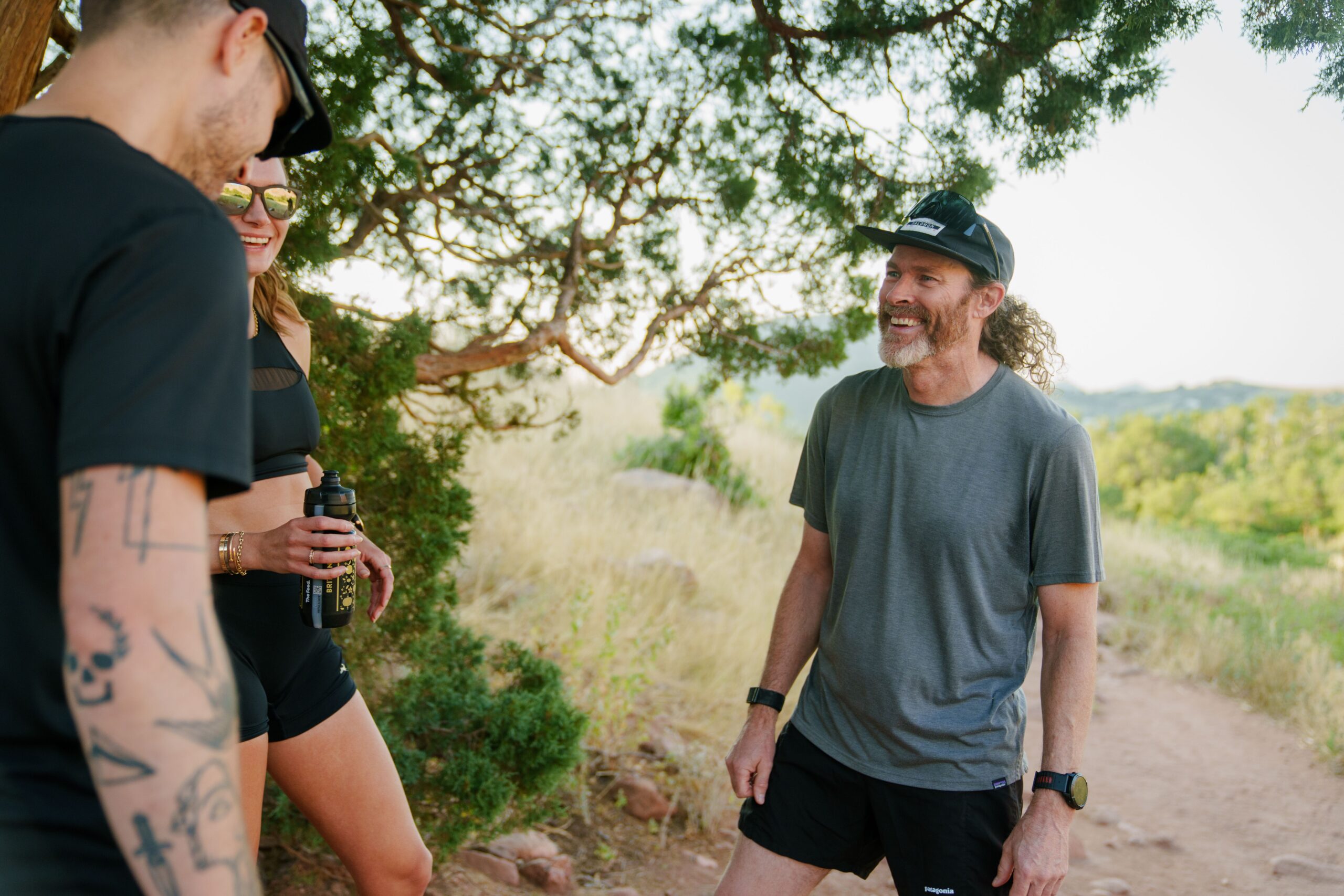The trainer is an incredibly valuable tool for winter and year-round training. This is especially true for cyclists and triathletes in colder, snowy climates or those who need structured workouts to reach specific fitness goals. While this can be necessary in the big scheme of things, there are times when you should get off the trainer to boost your fitness and abilities.
But when and how should an athlete leave the trainer behind to get a mental break from the monotony?
Let’s take a look at the three most impactful ways to get off the trainer and how to do them right.
1. Ride outside on sunny, warmer days
I’ve promoted a simple rule since 2008 with all of my athletes: if you have a sunny, warm day in winter, you can and should get outside for a longer ride.
The winter is the one time during the year I recommend that, when the weather allows, an athlete break from their structured training plan to get a mental reprieve from training. For some athletes, this means taking a half day off from the office, leaving work around lunchtime, possibly bundling up, and heading out for a nice three- to four-hour endurance or tempo ride.
I sometimes find myself using the phrase: “screw your training plan ride!” This allows your athletes a chance to restore their mental energy, something that can
Be careful not to take this to the extreme, though. Up to three days of riding like this within a seven-day period of good weather
Also, on a warm winter day, it might be tempting to ride harder than you should. Make sure you don’t push it so hard outside that you have to take a recovery week afterward. Most rides should end with an Intensity Factor (IF) of roughly 0.60-0.75, depending on your level of fitness. TSS will be dependent upon your fitness level, but for the average IRONMAN 70.3
2. Add strength training
Of course, strength training must be added in the winter, and as discussed in my last article about using the trainer, cutting your total ride time in favor of focused rides is one of the top things athletes should be doing. This allows plenty of time to get in the necessary strength work to help athletes get stronger and move better.
Contrary to popular belief, you don’t need a gym! A single kettlebell (8kg for beginners, 12kg for intermediates) and a yoga mat is more than enough to start a solid strength training program.
Share this video playlist with your athletes to add a 30-minute strength routine to their workout after using the trainer. Emphasize moving swiftly from each exercise to the next, and follow the order given below. The order of these movements is incredibly important as this workout is designed to help move better and open up tight areas right after firing important muscle groups.
Dynamic warmup
Complete 1-4 and return to 2-4 for a second round.
- Foam rolling exercises: 1×30 seconds each side
- Lacrosse ball glute medius: 2×30 seconds each side
- One arm lat stretch with deep breathing: 2×5 deep breaths each side
- Sofa stretch: 2×30 seconds each side
Strength workout
Start with A1, then immediately move to A2. Take a short rest, then repeat both exercises until you complete all prescribed sets. Then, move on to B1 and B2 in the same fashion.
- A1. Bird-dogs: 2 sets, 3-5 reps each side, concentrating on technique
- A2. McGill Crunches: 2 sets, 5 reps holding each repetition for 5 seconds
- B1. Side-lying straight leg lifts: 2 sets, 8-12 reps each side, concentrating on technique
- B2. Double kettlebell hover deadlifts: 3 sets, 5-8 reps, holding each for two seconds at the bottom
- C1. Kettlebell eastern goblet squats: 2 sets, 8-12 reps
- C2. One arm kettlebell rows: 2 sets, 6-8 reps each, arm keeping abs braced and shoulder blade held back and down
- D1. Max effort front planks: 3×3 rounds bracing everything for 5 seconds, relaxing on the ground for 3 seconds
- D2. Foam roller with stretch: 3×30 seconds
- D3. Lunge reach twist: 3×30 seconds
3. Cross-train to build fitness and stay mentally fresh
This is a roadblock that a lot of athletes and coaches encounter, as they instead think “HTFU” or “just push through” will get them to their goals.
Yes, there are definitely days and times when we need to push through, but it should not become an every-other-workout occurrence. I heard this often from my powerlifting coaches in high school and college: “We want fives, sixes, and sevens for 90 percent of our workouts. Another nine percent will be eights and nines, with competition as a ten.”
This means that most days, workouts should not leave you mentally or physically drained and should have a rating of perceived exertion (RPE) of five, six or seven. You shouldn’t be so tired from your last workout sessions that you are dreading the next day’s workout.
This is where so many endurance athletes go wrong in the winter. They keep exhausting themselves on the trainer, convinced that somewhere a competitor is going harder. In fact, it’s not how hard you can go day in and day out that will get you to higher performance; it’s your ability to recover day after day while being consistent with training.
So, go on a hike, take your mountain bike for a ride in the snow, go for a swim, try rock climbing, or go climb stairs. It’s just important to do something that gets you physically moving and helps you build fitness. That is truly the key to having a stellar winter base period and being able to enter race season in a fresher mental state, a highly overlooked part of top performance.










